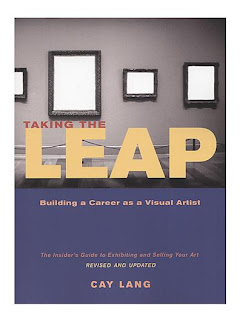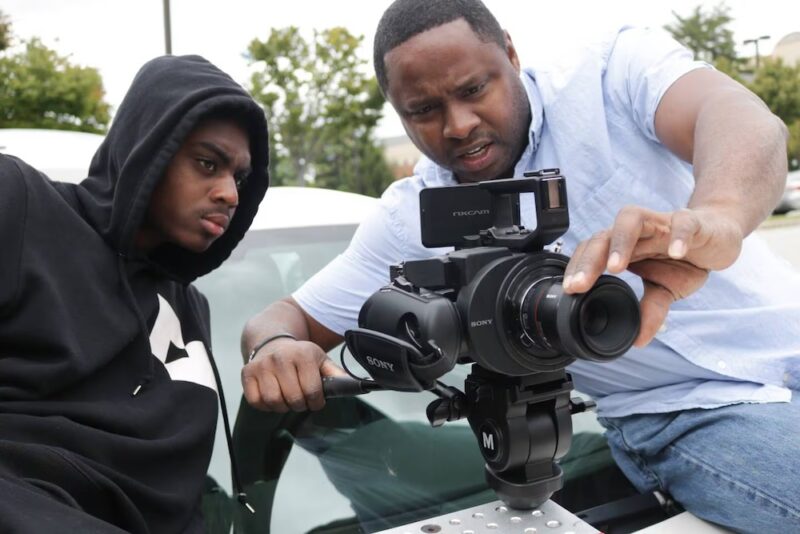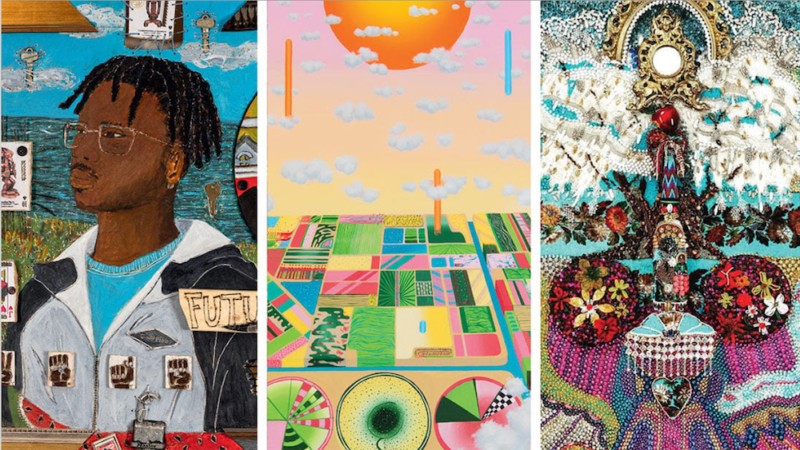 Second on my summer reading list was “Taking the Leap: Building a Career as a Visual Artist” by Cay Lang. The sub-heading reads: The Insider’s Guide to Exhibiting and Selling Your Art.
Second on my summer reading list was “Taking the Leap: Building a Career as a Visual Artist” by Cay Lang. The sub-heading reads: The Insider’s Guide to Exhibiting and Selling Your Art.
This publication has a conversational tone that is both down-to-earth and encouraging. In eleven chapters, which are structured mostly chronologically, the artist learns to set goals, create an ‘artist’s packet,’ to plan a strategy, and stage an art exhibition. The author, Cay Lang, is a successful artist, educator, and writer and uses all of these areas of knowledge to put this publication together. After reading the first few lines of the book’s introduction, I knew that I would enjoy reading it.
To be a successful artist, you need three things: curiosity, commitment, and good work habits. You were probably thinking I would say talent.
Talent, according to the prevailing wisdom, is a rare and unpredictable quality usually bestowed upon the lucky recipient at birth. It is commonly believed that if a person is fortunate enough to be born with talent, then everything he or she attempts will be effortless and will astound the world with its brilliance.
Let’s not worry about whether you have talent. Talent is a nonissue. It can be neither measured nor defined, and agonizing over it serves no purpose other than to create both anxiety and, if you’ve developed a talent for worrying, an excuse for avoiding work.
From the very start, Lang makes the reader feel that their goals are worthwhile and that their success is attainable and realistic. Without gimmicks or false cheer, Lang discusses her own experiences, including her involvement with the College Art Association, as well as those of an emerging and then, more established, exhibiting artist. I liked that Lang included sample resumes and cover letters and I also appreciated the quotes by famous artists, critics, and dealers included on the outer edges of each page.
However, I did have a few issues with this book as well. One problem is with Lang’s suggestion that sending ‘artist packets’ out to galleries is a viable way to grow one’s career. Apparently she has found exhibiting opportunities and success in this way, but I don’t know of any other artists who have.
To me, putting together an artist packet – resume, bio, statement, images – is an important step in becoming a professional artist, but not so one can send it out to various and sundry galleries in the hopes of being represented. In my experience and research it is the other way around: a gallery finds the artist because their work is already up somewhere else. I would concentrate more efforts on generating opportunities for the work to be seen in a professional setting by the people who may want to represent you.
Lang suggests that one way to grow an art career is for artists target and visit specific cities where they do not reside and visit hundreds of galleries as research. Then, send packets to the galleries that seem to be a good fit. Then follow up with phone calls to the galleries after the packets are sent, in order to to set up an appointment, and then bring your packet, or the actual work, to the space. She states that if one gallery out of ten is interested, then an artist should consider themselves successful.
Although there is a degree to self-determination in this process, an artist’s ultimate success comes from selling themselves successfully and by being commercially represented. To me, this is too narrow a definition of success, as well as too much work for too little result. I think there are better, more organic and holistic ways to do this, and I don’t like that this is the ‘meat’ of Lang’s message.
Other, later topics include copyright, websites, how to hang work, and how to write a press release. All of these topics were helpful, but I still felt a nagging dissatisfaction that they were handled too generally or too lightly. To me, the website should be one of the first topics presented, and a press release is a topic for a gallery to handle. In a later section, titled “The Secret to Getting Media Attention,” Lang advises to Pay attention to articles in magazines ad newspapers to see what the current news topics are. Is there a way to attach your art event to any of them? To me this is sort of obvious and also a bit disingenuous, but maybe I’m being too picky.
The beginning of this book is terrific – energetic, empowering, and helpful, but the second half seemed a bit fluffy and could have used a few more highly developed or more contemporary topics. I would recommend this book to an artist who is beginning their career, but I don’t think I would have BFA or MFA students read it cover to cover.
– Cara Ober



